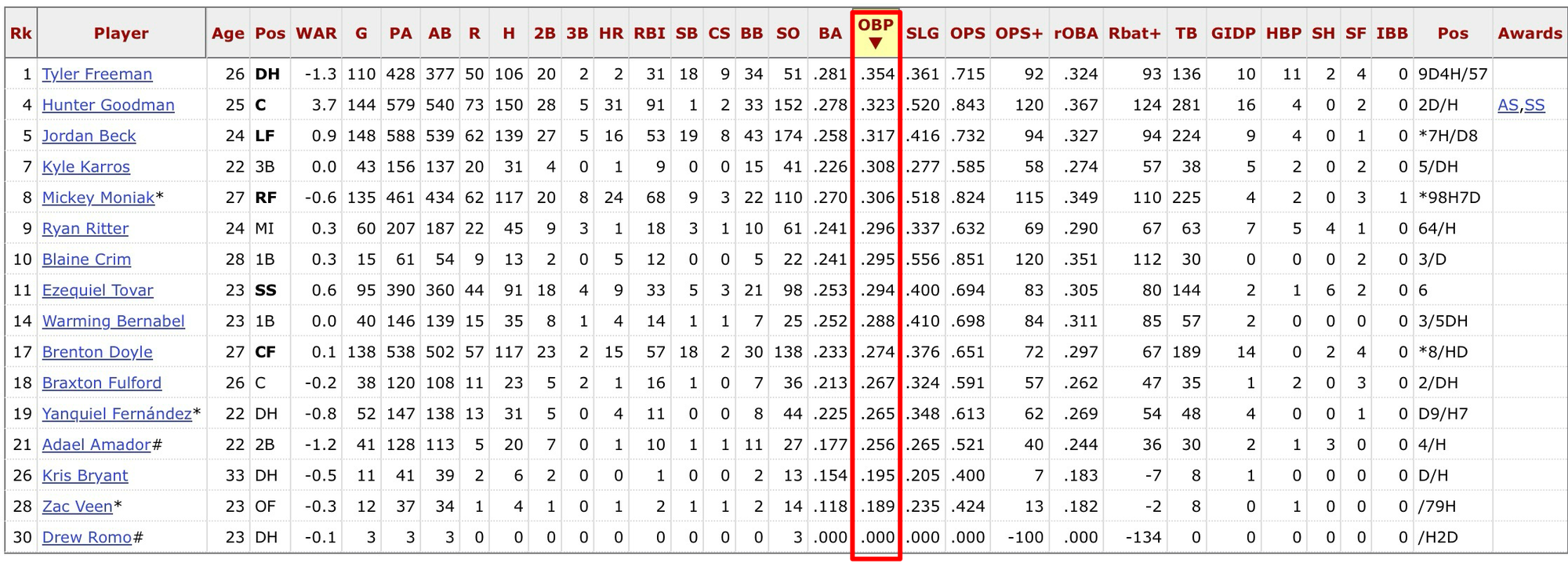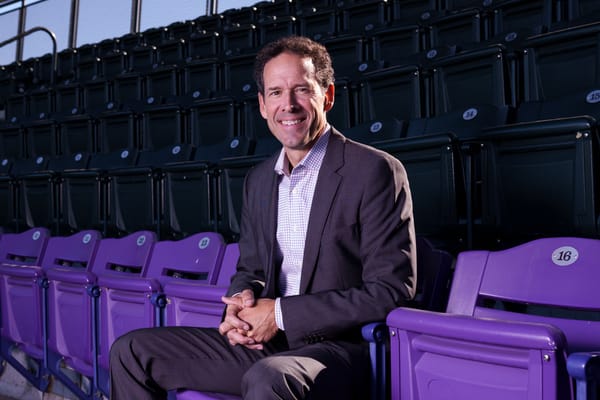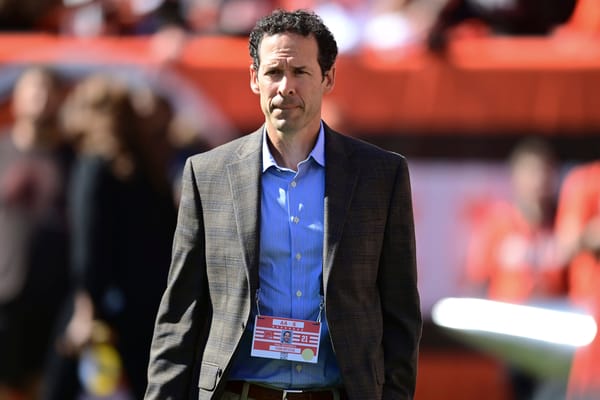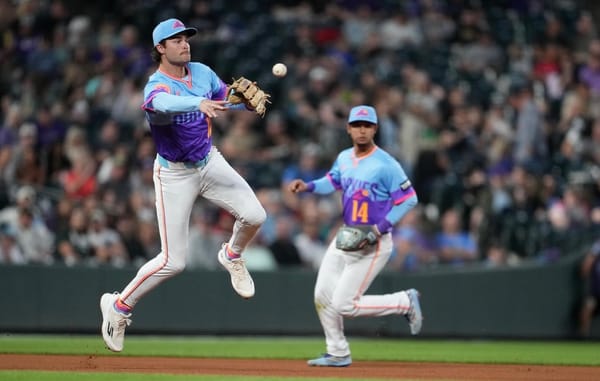Considering “Moneyball” and the Rockies’ outfielders
Perhaps Michael Lewis’ book provides a clue.

“When [DePodesta] was finished, he had a model for predicting run production that was more accurate than any he knew of. In his model an extra point of on-base percentage was worth three times an extra point of slugging percentage.”
—
“[I]t reinforced the Oakland A’s working theory that a guy’s hitting ability had a far greater effect than his fielding ability on a team’s performance. Albert Belle missed more fly balls than any other left fielder in baseball, but the system proved that he more than made up for it by swatting more doubles. Or as Paul put it, ‘The variance between the best and worst fielders on the outcome of a game is a lot smaller than the variance between the best hitters and the worst hitters.’ The market as a whole failed to grasp this fact, and so placed higher prices than it should on defensive skills. Thus the practical answer to the question about Johnny Damon’s defense: it would probably cost more to replace than it was worth. Anyone who could play center field as well as Damon was either a lot worse offensively than Damon, or overpriced. The most efficient way to offset the loss of Johnny Damon’s defense was to add more offense.”
— From Michael Lewis’ Moneyball: The Art of Winning an Unfair Game
Let’s start with a couple of caveats.
First, Moneyball is more than 20 years old. Baseball has changed — a lot — since then. Second, like baseball, Colorado Rockies president of baseball operations Paul DePodesta has changed, too, growing older and wiser since his time with the Athletics. In an interview last week, the Rockies new PBO said that one of the things he first learned after leaving Oakland was what worked for the Athletics did not seamlessly translate to another team.
In other words, it’s unfair to judge 2025 Paul DePodesta against the young man he was in Lewis’s 2004 book because, obviously, his thinking has evolved. (Plus, Lewis is one of the great nonfiction writers of our time. He was always going to tell the best story he could.)
But the two passages I’ve quoted above have been on my mind since DePodesta was hired. The first highlights his understanding of OBP’s relative value over SLG; the second suggests his thinking (at that time) about the value of defense.
Had I been in a position to ask DePodesta anything since he joined the Rockies, I would have asked how his ideas about these topics have changed. But since I haven’t been, I want to game that out here with an eye to tomorrow afternoon’s MLB deadline for tendering contracts.
Three points are on my mind. First, DePodesta has indicated the Rockies will make trades from positions of surplus, and while he declined to be more specific, the assumption is that he’s referring to a bumper crop of outfielders. Second is his decision to place Rockies outfield prospect Sterlin Thompson on the 40-man roster. Third is an attempt to game out what might be happening in the Rockies outfield as DePodesta rebuilds for 2026.
But I want to be clear from the outset: I’m doing a lot of speculation here, and I know that.
On-base Percentage
Let’s start with OBP. In 2025, according the Baseball Reference, the average OBP score for an MLB player was .315.
With this in mind, I wanted to consider how the Rockies fared in terms of OBP. As a team, they had a OBP of .293, the lowest in MLB. Now consider individual players still on the 40-man roster:

I knew Tyler Freeman was good about getting on base. I did not realize just how good, but his .354 OBP is well above the MLB average. In fact, the Rockies had three above-average players by this metric: Freeman, Hunter Goodman, and Jordan Beck.
Freeman did not have enough innings to be considered qualified by the end of the season because he missed too much time with an oblique injury, but if he did, his OBP is high enough to rank him among the top 30 of MLB’s OBP.
Now consider Brenton Doyle’s .274. Granted, Doyle did not have a good 2025, but he finished with a terrible OBP both in comparison to his teammates and the rest of the league. Mickey Moniak earned a respectable .308, but that’s far below Freeman’s score.
If DePodesta still values OBP as much as he did, it seems clear that Tyler Freeman is a player who would have his attention.
Defense
Now consider the second passage from Moneyball, the one about the market overvaluing defense. (Frankly, this entire section of the book is fascinating, and it illustrates how DePodesta’s economics background gave him a radically new approach to the game.)
One of the things we learned during the Bud Black Era, though he never really put it like this, was the premium the Rockies placed on defense. After all, as a former pitcher, Black wanted a defense that would support pitchers. I never pursued this (and I wish I had), but I suspect that part of the Rockies’ offensive problems stemmed from the fact that Black was, to his core, a defense-first manager.
So, the Rockies developed some elite defenders: Nolan Arenado, Trevor Story, Ezequiel Tovar, and two-time Gold Glove winner Brenton Doyle. During Doyle’s rookie season, he was one of the worst offensive players in baseball and had a .250 OBP. But his glove became his calling card, and he played all those innings because he was so breathtakingly good in center. Ryan Spilborghs and Cory Sullivan referred to Doyle as the best CF ever to play for the Rockies, and it’s hard to disagree.
The question, then, become this: How important that is to Paul DePodesta? In other words, are Doyle’s defensive value and those SportsCenter highlights worth more than Tyler Freeman’s OBP?

For this, I’m going to turn to FanGraphs (simply because it lets me get to the data easier):

Of the Rockies players who spent time in center field, and that was mostly Doyle and Moniak, Doyle was by far the best defender. It’s impossible to compare Freeman here because the Rockies did not use him in center. However, the Cleveland Guardians did — an imperfect comparison, I know — and during that time, he spent 731.0 innings in center with a DRS of 3, an OAA of -3, and an FRV of 0. In other words, he was fine.
FWIW, both Moniak and Freeman told me that moving from center to a corner spot was hard: Centerfield gives the defender a clear view of what’s happening; a corner, however, requires the defender to learn to play the angles. Defensive metrics indicate that both players struggled to make the adjustment.
Yes, Coors Field is very different than Progressive Field, but surely a question Paul DePodesta is asking himself is whether Tyler Freeman would be a serviceable replacement for Brenton Doyle.
Salaries
The Colorado Rockies are not the Oakland Athletics, and they operate with a bigger budget, but let’s assume the Rockies are hoping to become a more cost-effective club than they have been, which is pretty much what Dick and Walker Monfort have said.
Here are the salaries these three center fielders are expected to make in 2025 per MLB Trade Rumors:
- Mickey Moniak (4.027): $4.2 million
- Tyler Freeman (3.046): $1.8 million
- Brenton Doyle (2.161): $3.2 million
Here’s the question, then: Is the better move paying less money for Tyler Freeman’s higher OBP and worse defense or more for Brenton Doyle’s elite defense but less-reliable bat?
Predictions
Again, all of this is guessing on my part, but I’ve wanted to think through what DePodesta might do based on his earlier approach. Here’s what I think will happen:
- The Rockies will non-tender Mickey Moniak. They have plenty of outfielders, and his contributions have been fine, but not $4.2 million worth. He can hit righties at Coors Field, but that’s not worth his salary.
- The Rockies will tender a contract to Brenton Doyle and trade him to a team willing to overpay for elite defense. For that team, Doyle will be a bargain — and bring back pitching for the Rockies.
- Tyler Freeman will be tendered a contract and serve as the Rockies starting center fielder in 2026. Will the defense be as good? No. But that’s a lesser concern for DePodesta. He’s paying for that sweet, sweet OBP. Sterlin Thompson, then, will move into one of the corner outfield spots. (Thompson’s skills are a topic for another day.)

By the way, MLB Trade Rumors lists Tyler Freeman as a non-tender candidate. Reader, I will take that bet.
This is all conjecture and worth what you’ve paid for it, but what fun is the offseason without some conjecture? And I’m curious to see how far DePodesta has moved from his Moneyball roots.
We’ll know about the contracts being tendered tomorrow.
Closing thoughts
I’ve run on too long, so I’ll bring this one to a close.
Also, I’ve got some stuff going on tomorrow, so this week’s newsletter is a day early.
DePodesta’s initial moves have me as interested in (and optimistic about) Rockies baseball as I’ve been in a while. Whatever this is, it’s not what we’ve seen. The coming weeks will tell us quite a bit as DePodesta continues to build his staff.
As always, thanks for reading —
Renee
Rockies Pitch is a newsletter that focuses on Colorado Rockies baseball.
Find me on Bluesky at @ReneeDechert.com or send an email to Renee@RockiesPitch.com.




![[Not Baseball] A Review of Jon Scott’s “Tom Petty and Me”](/content/images/size/w600/2025/11/IMG_5334.jpeg)
